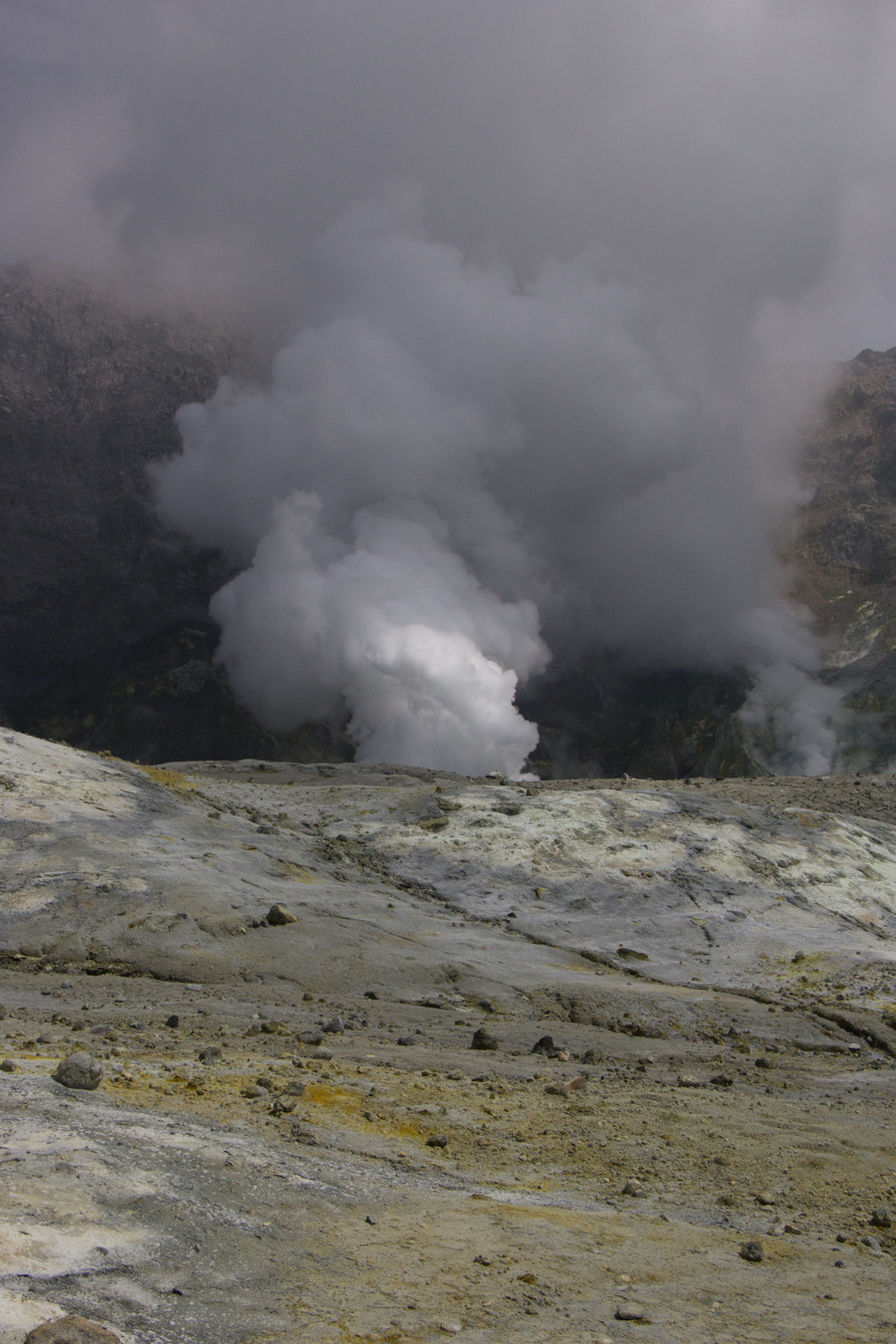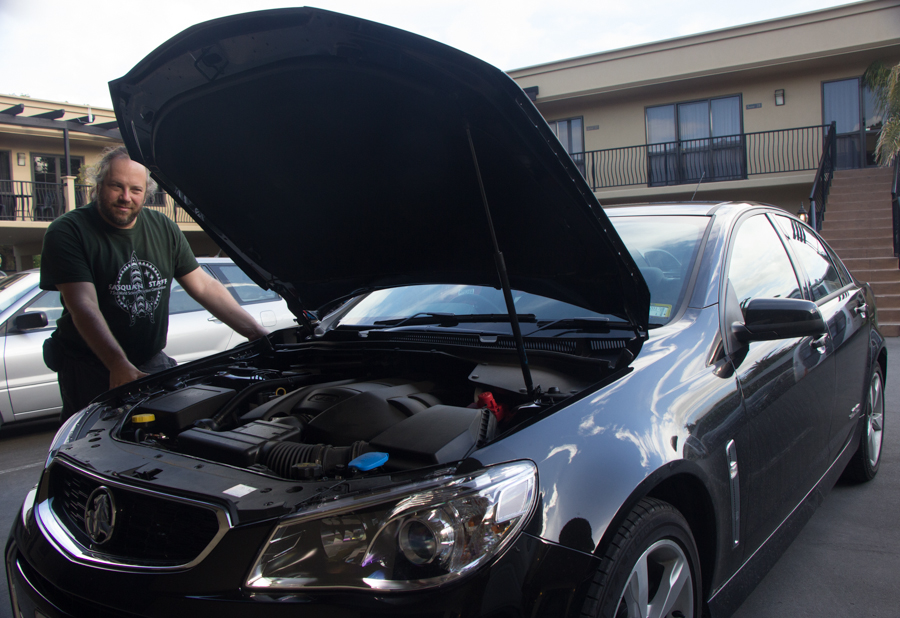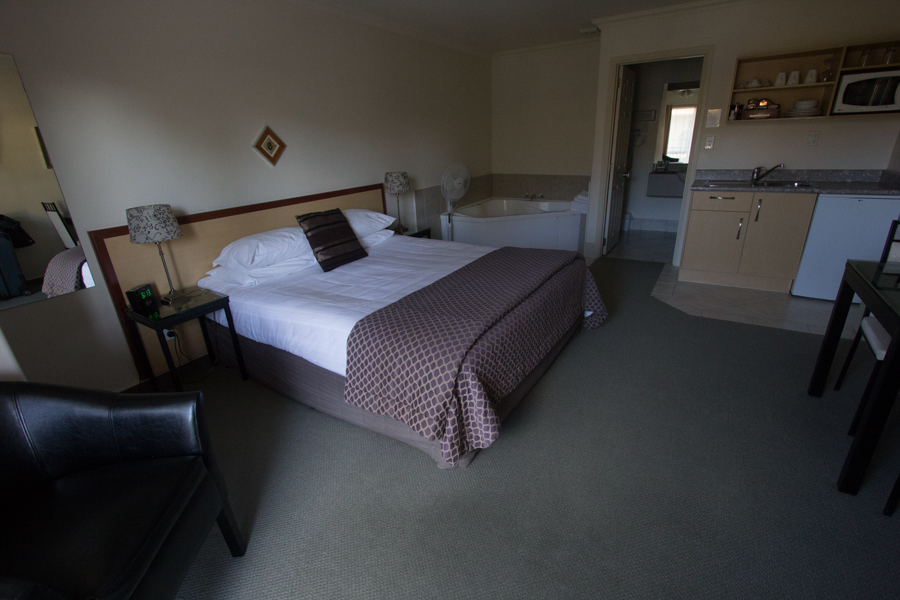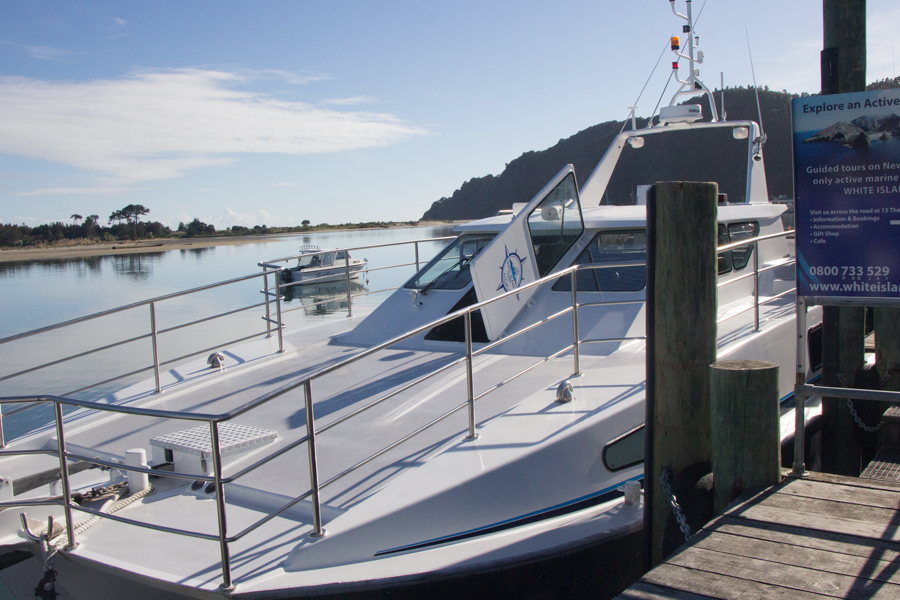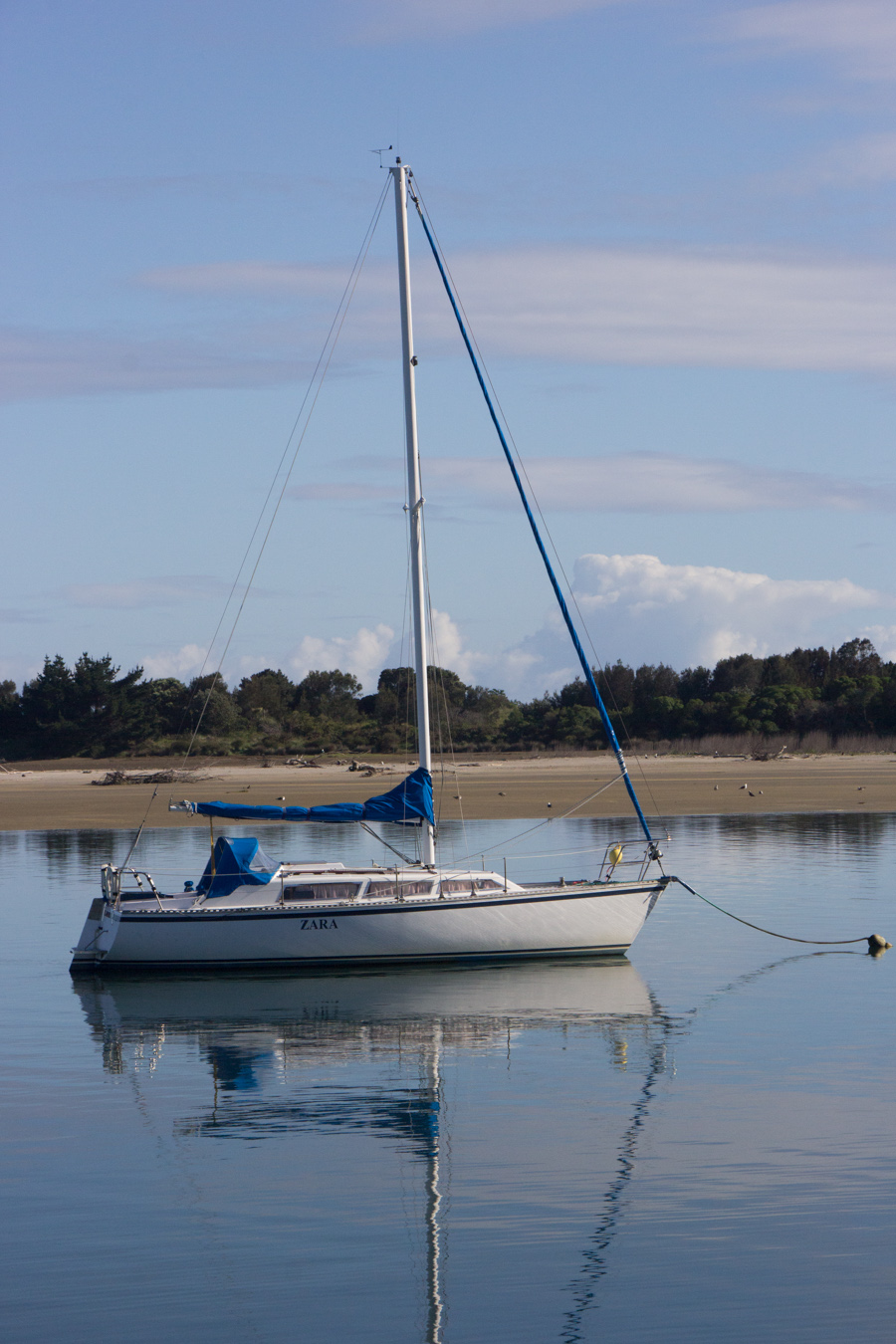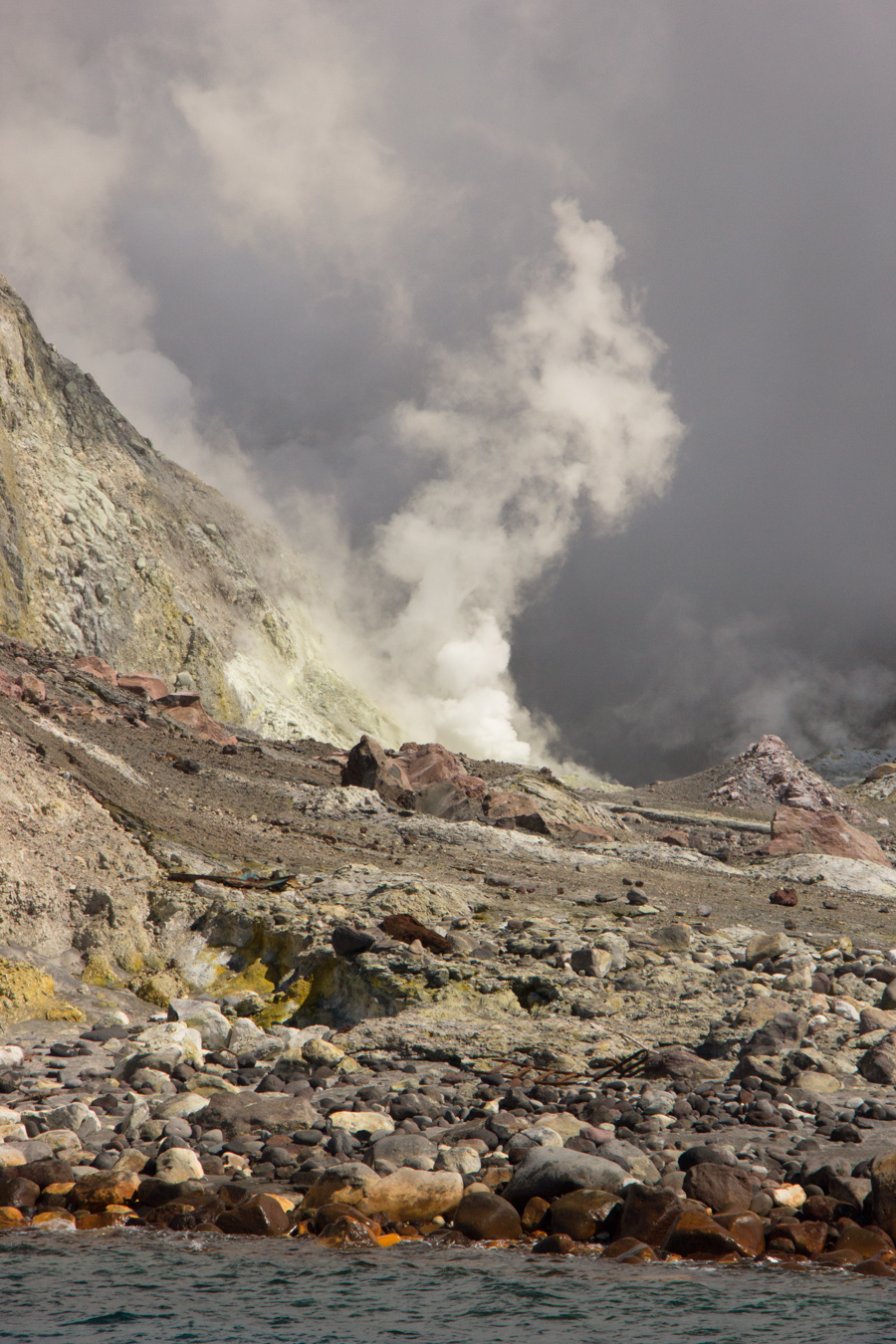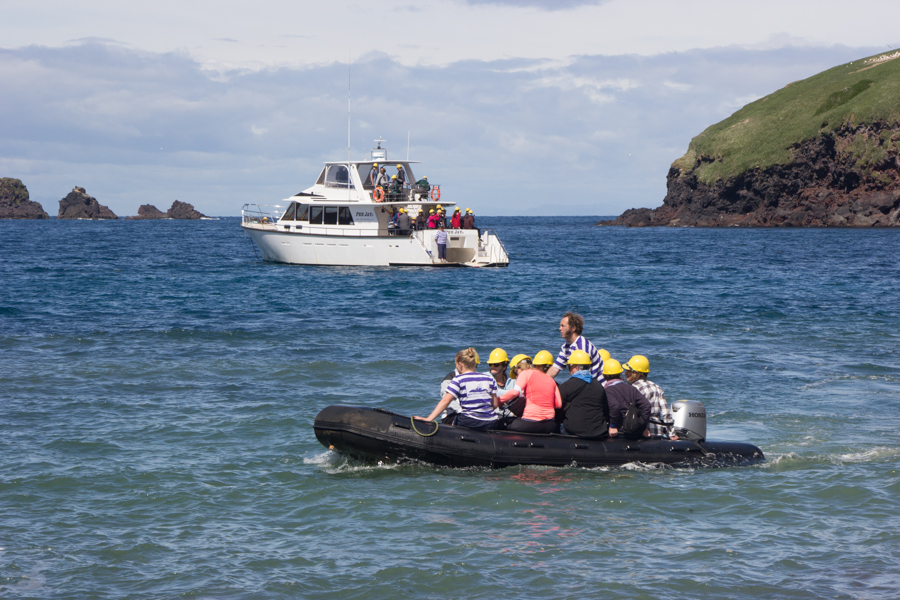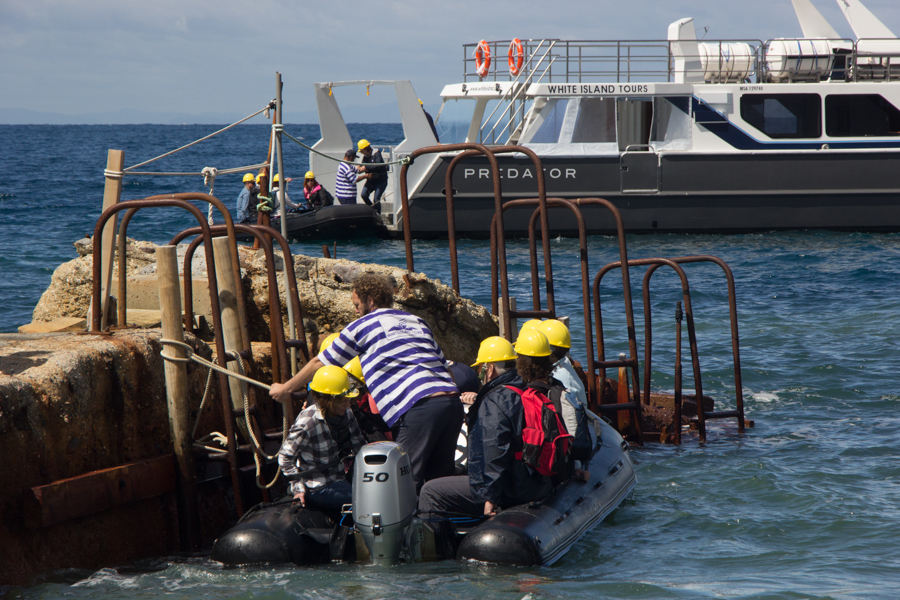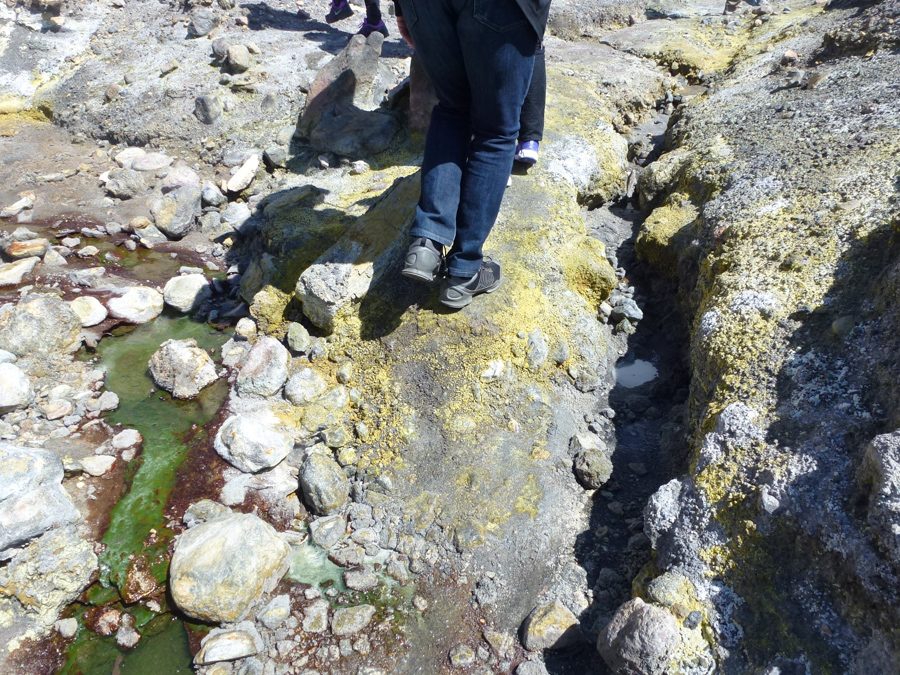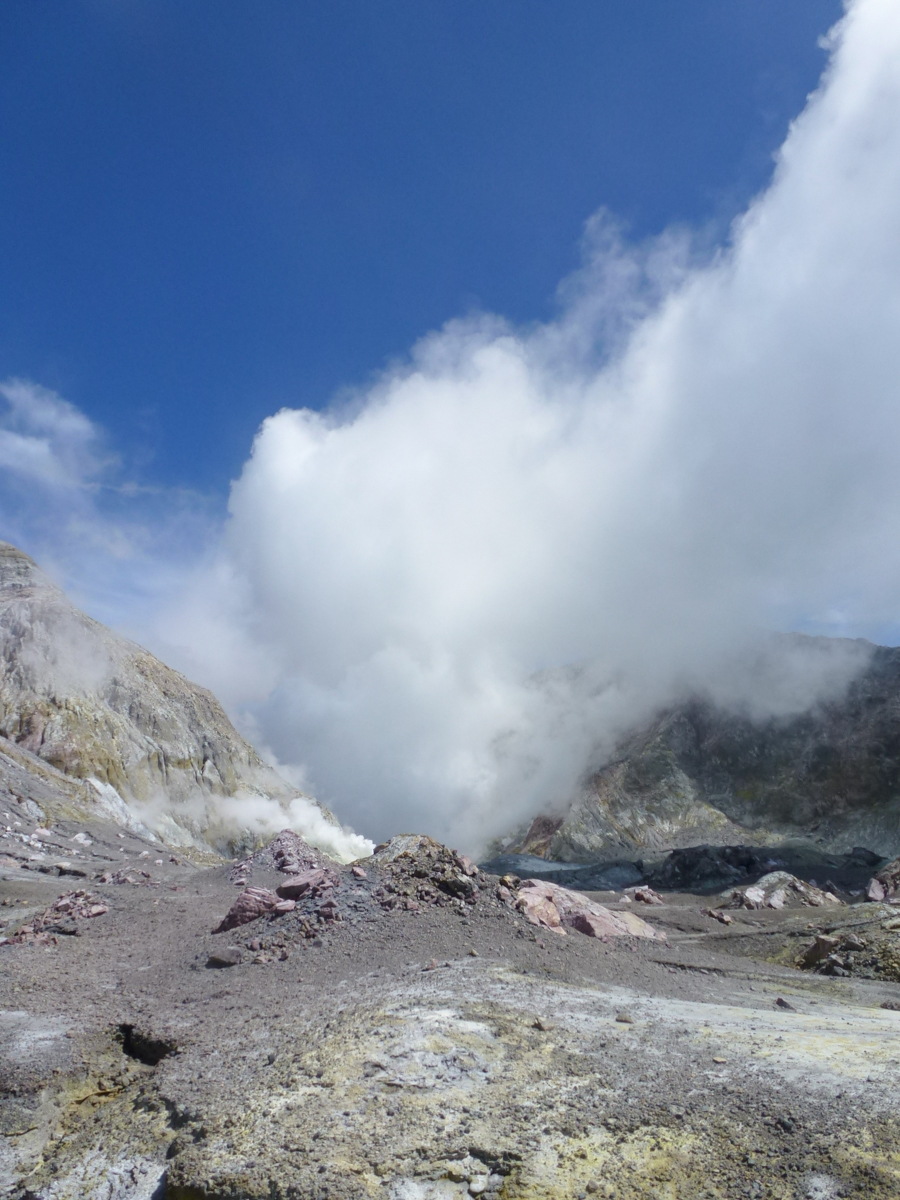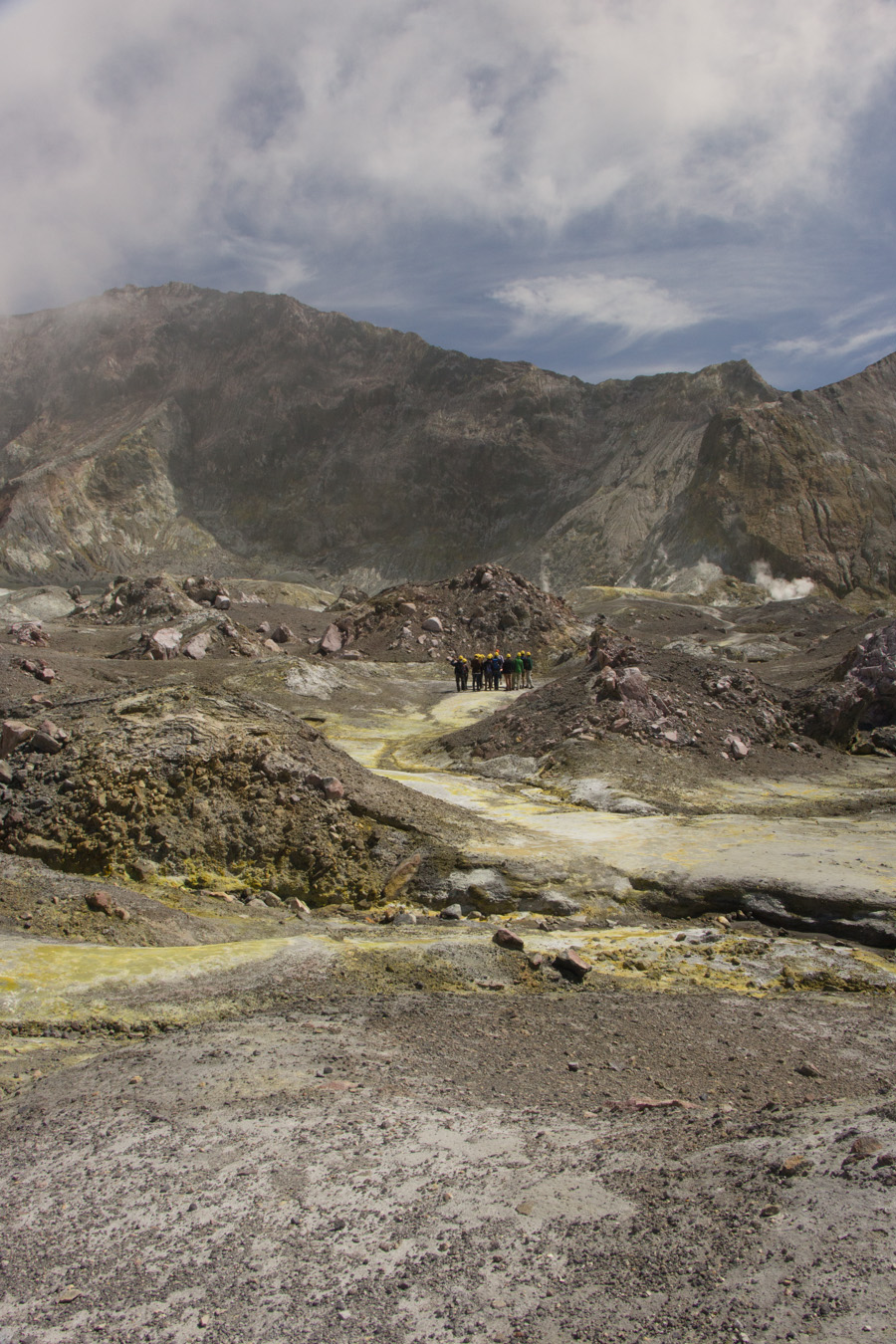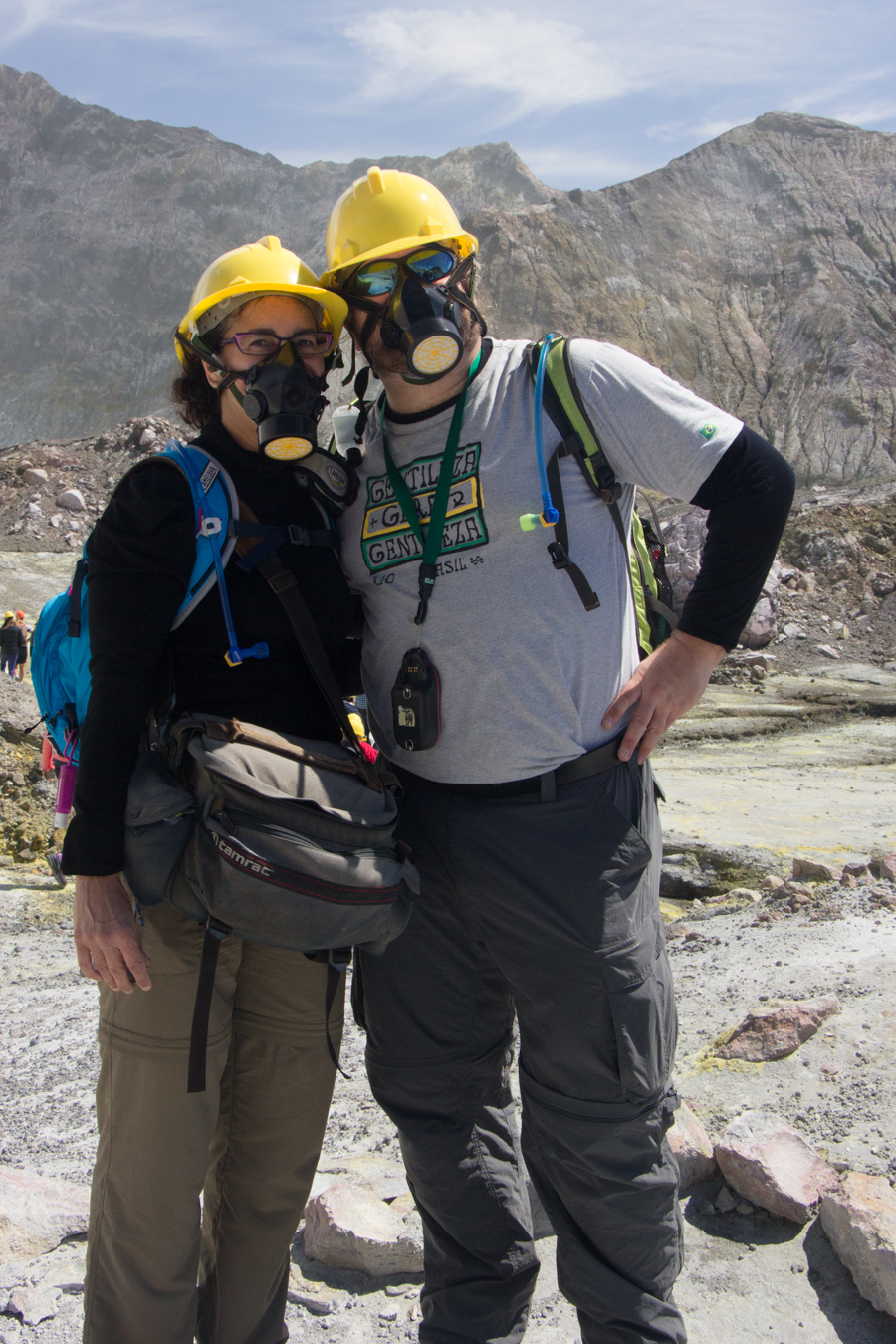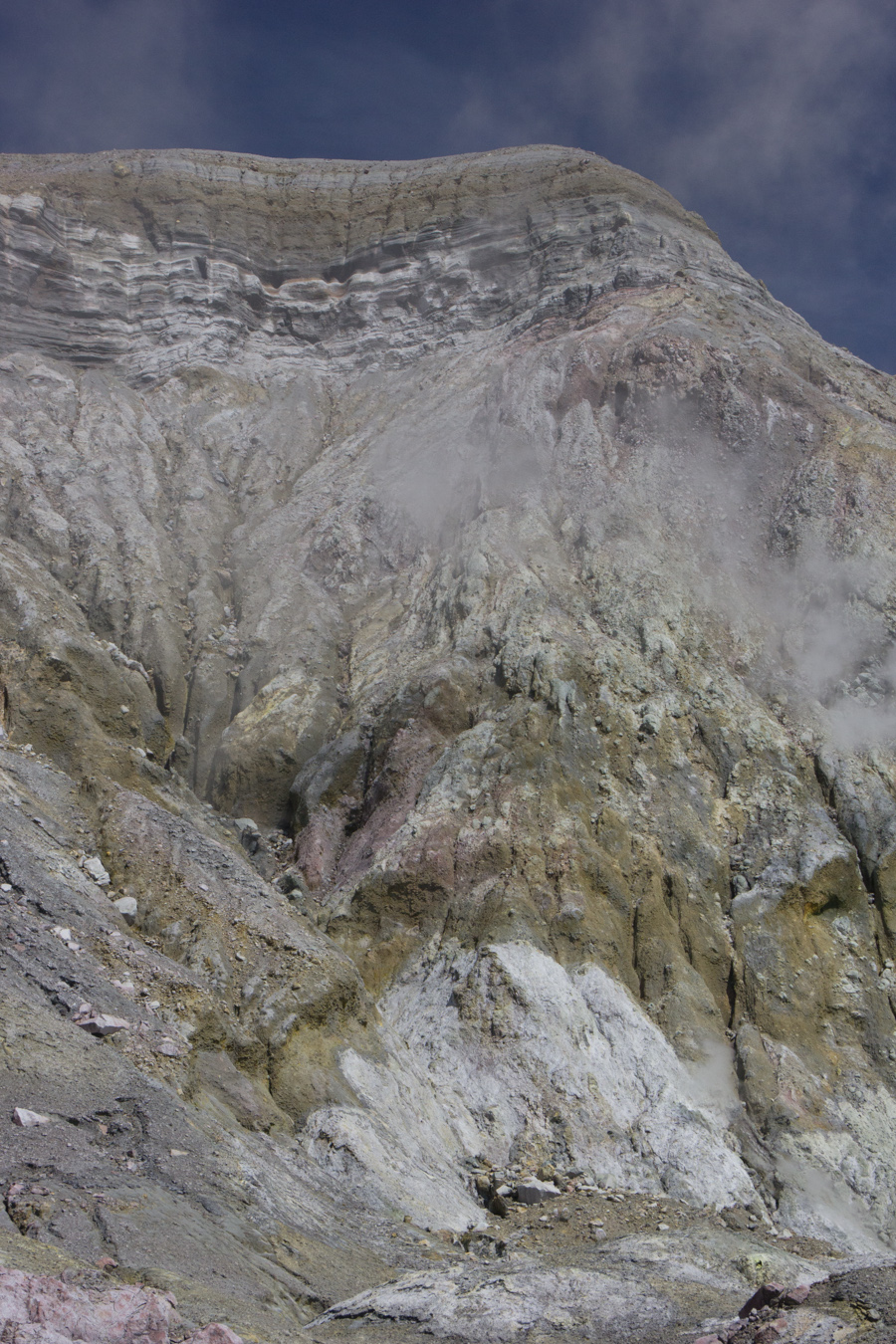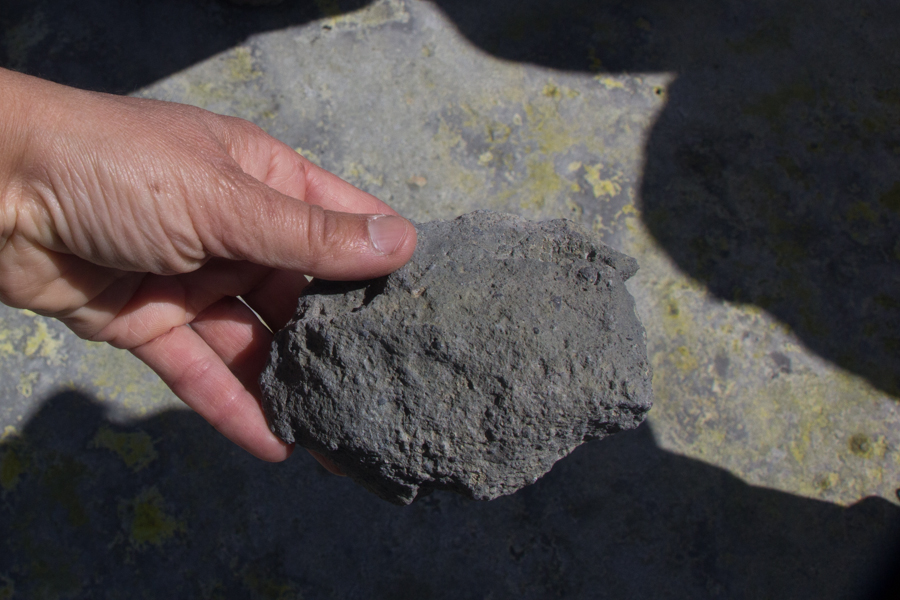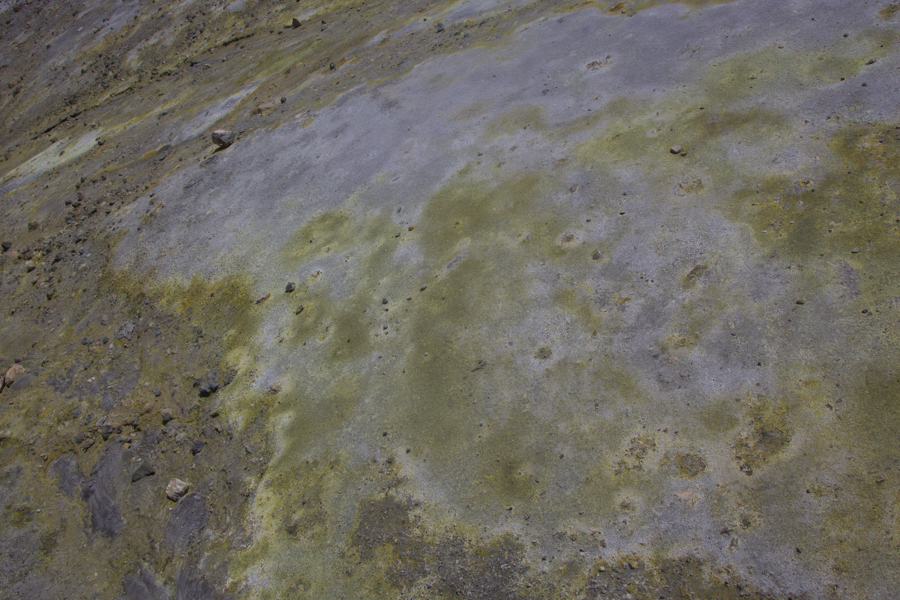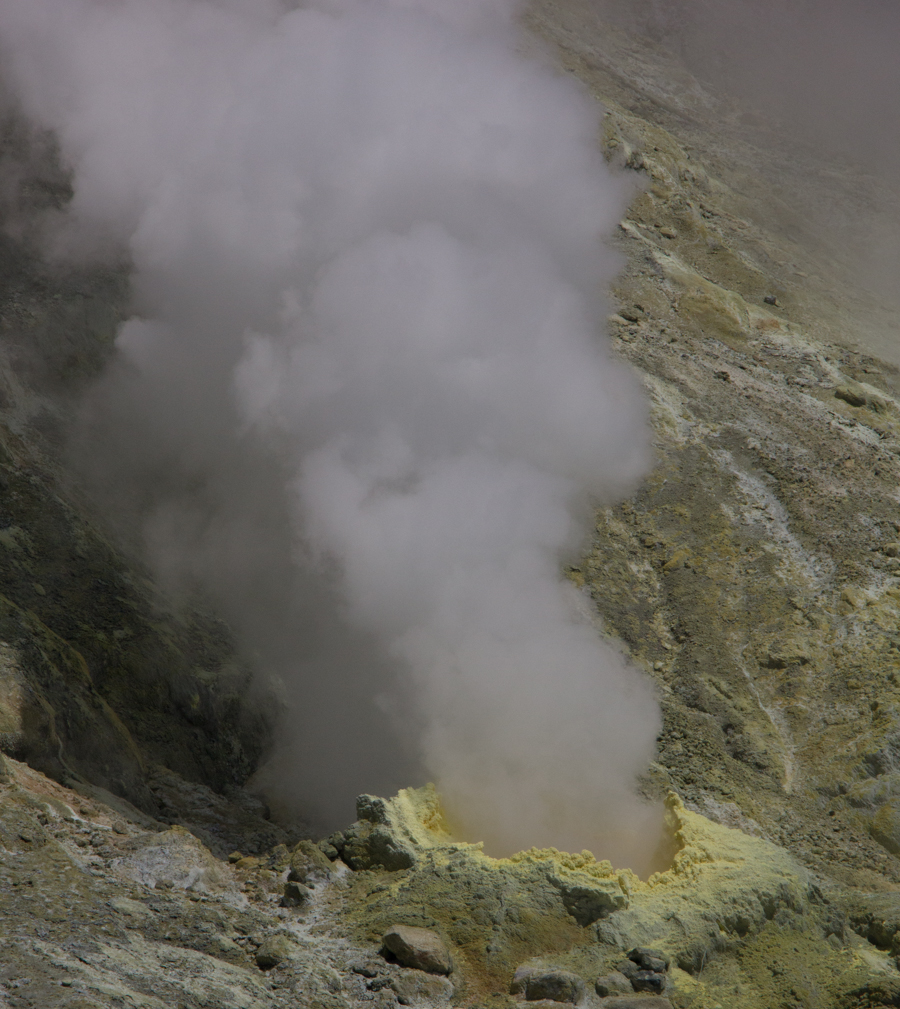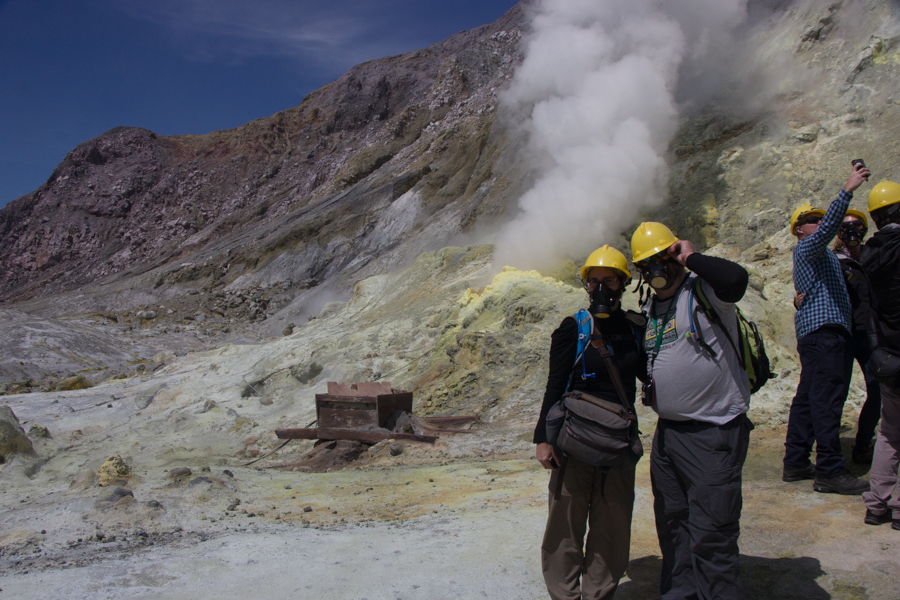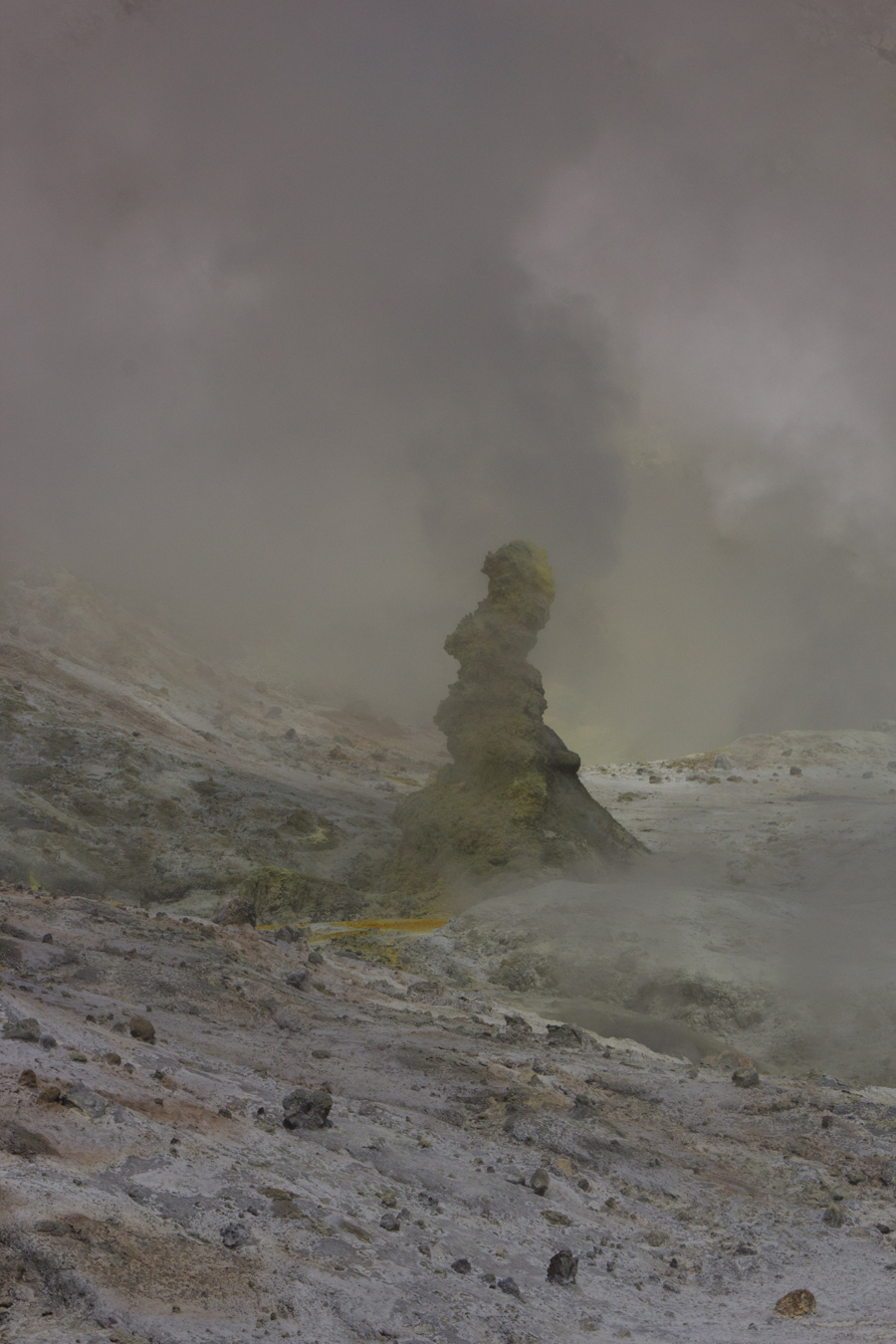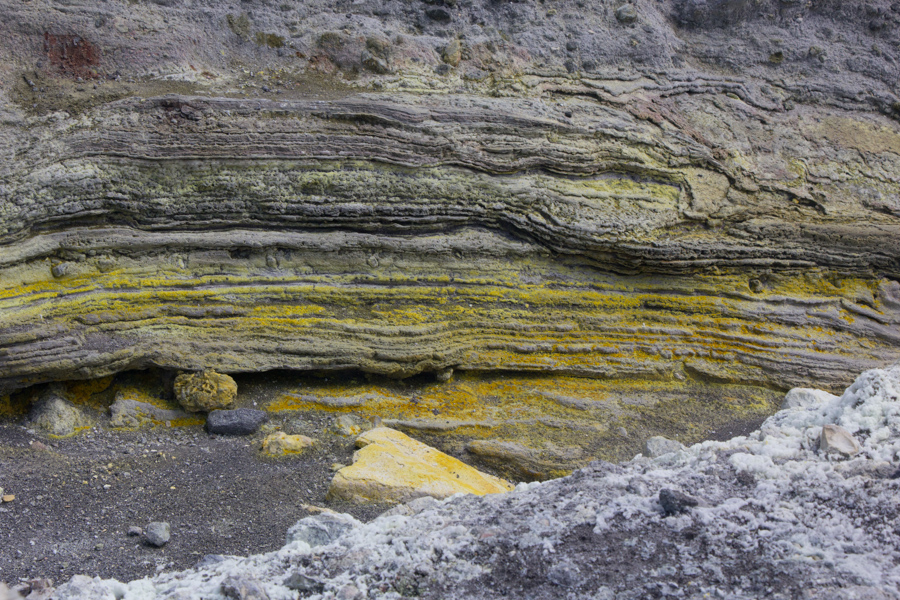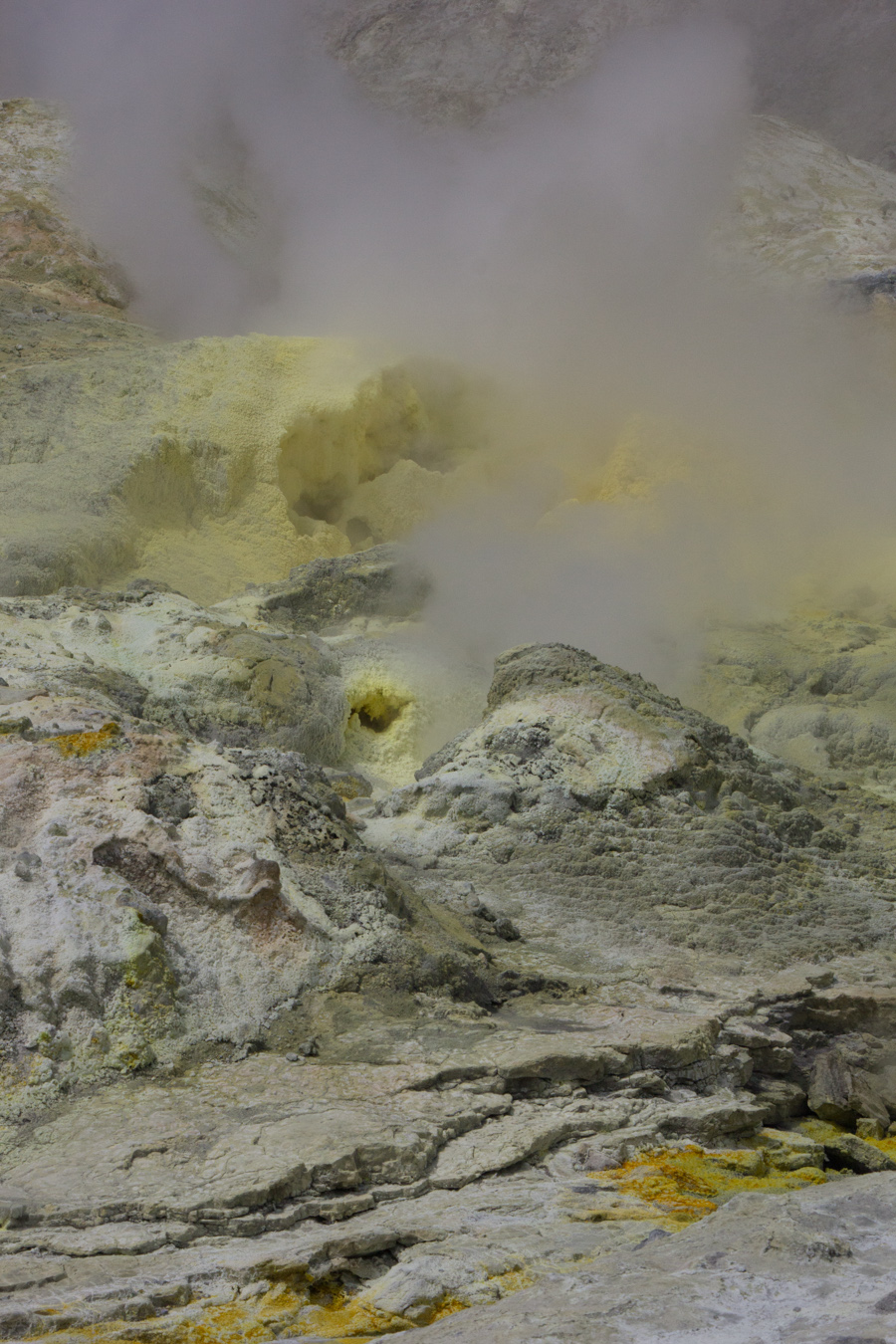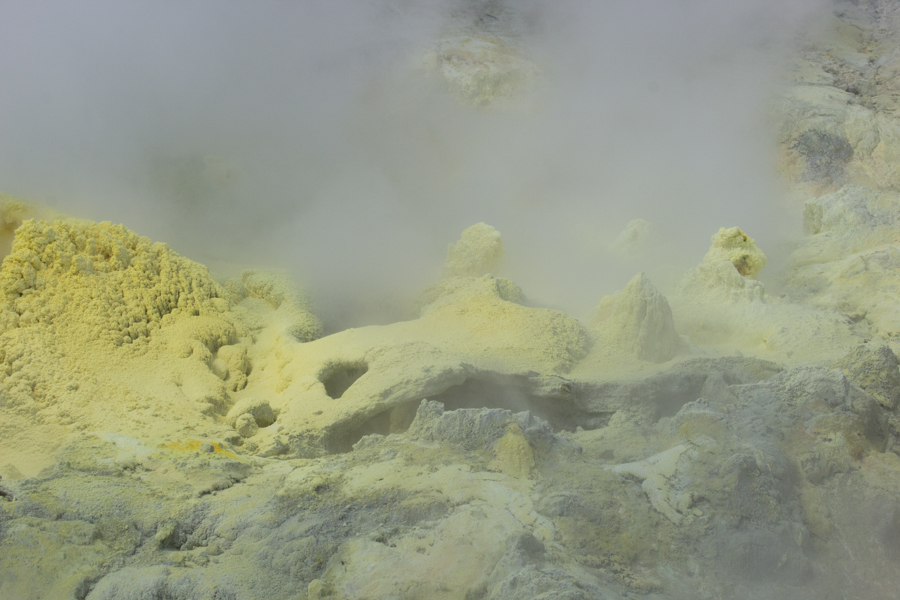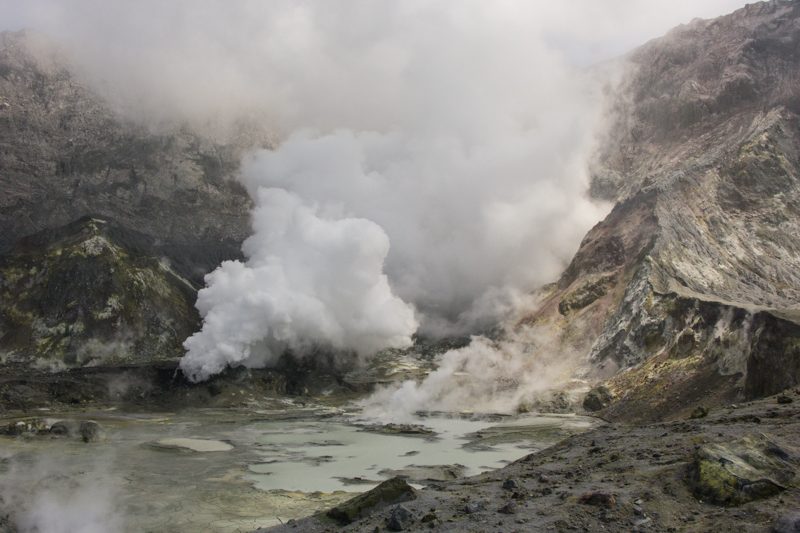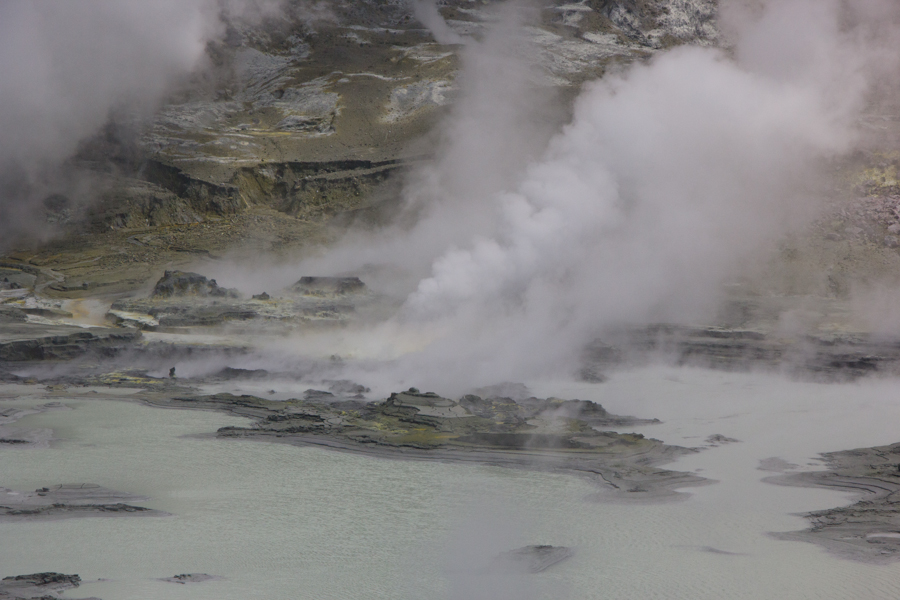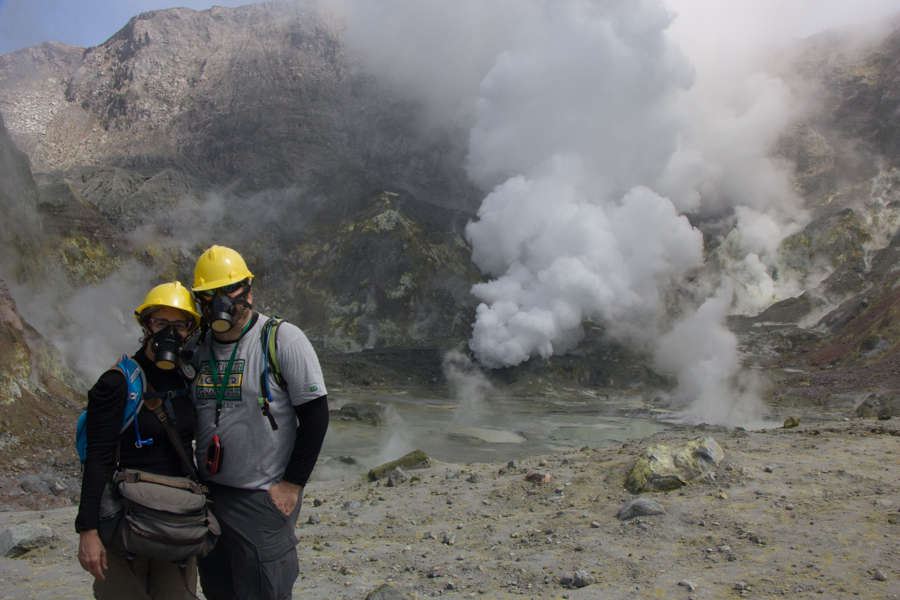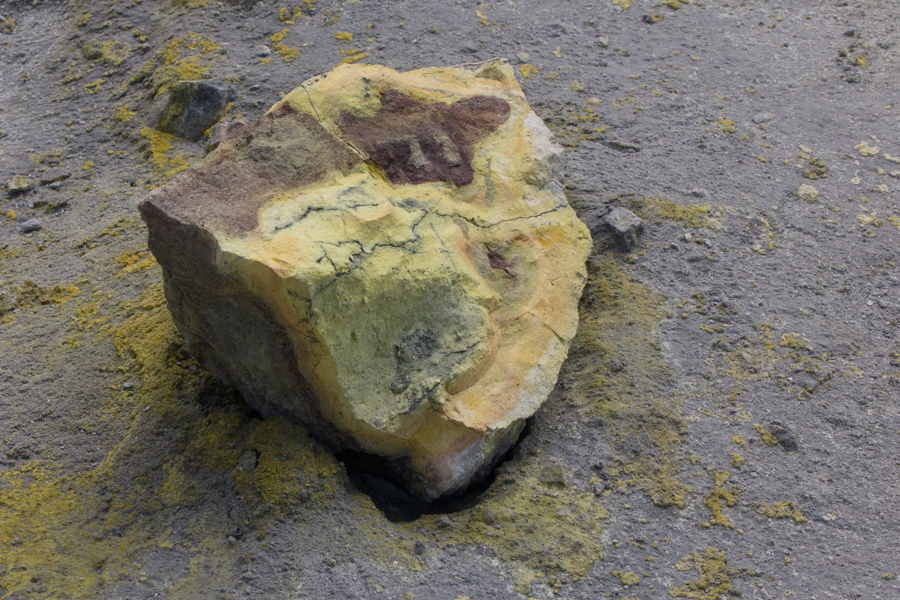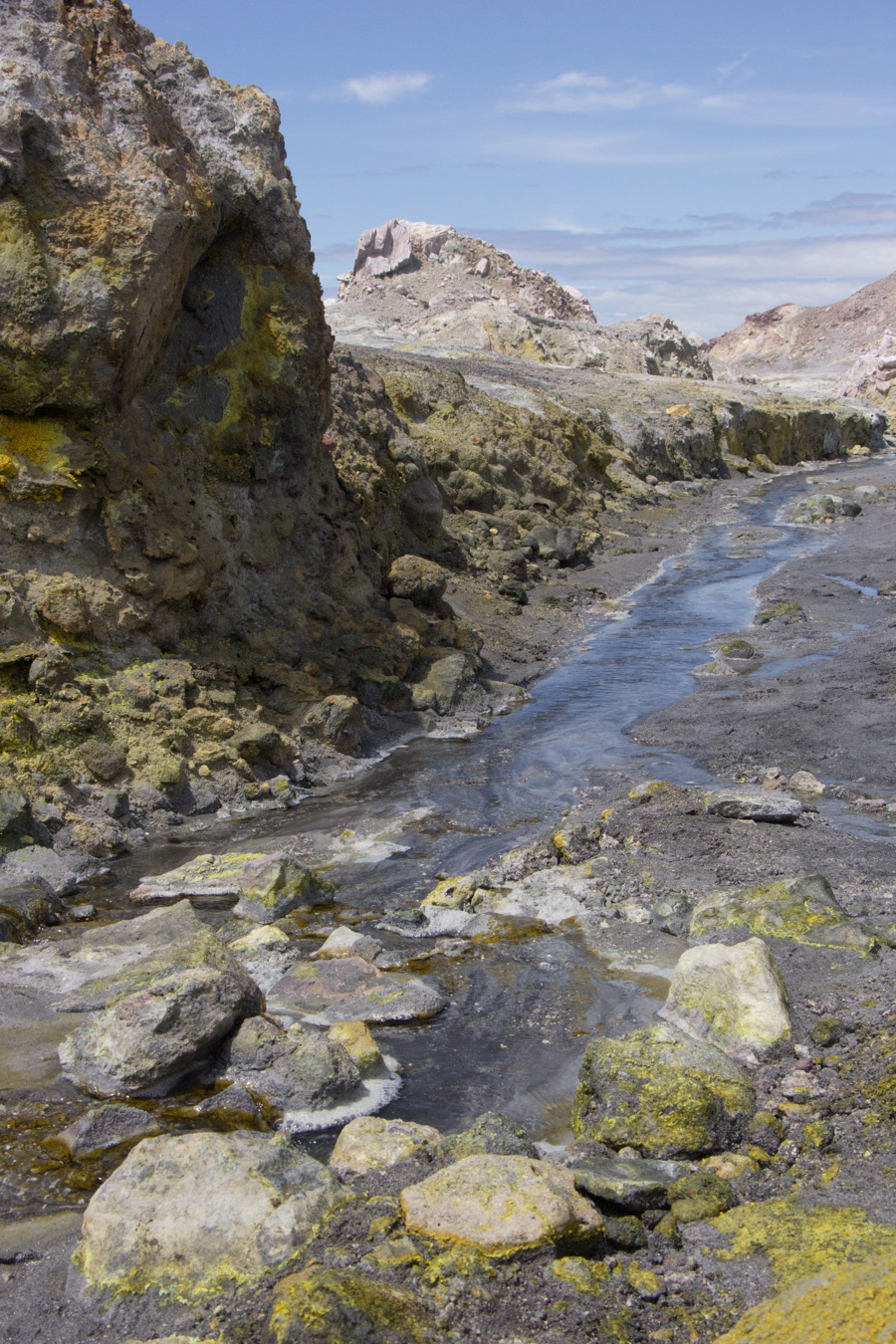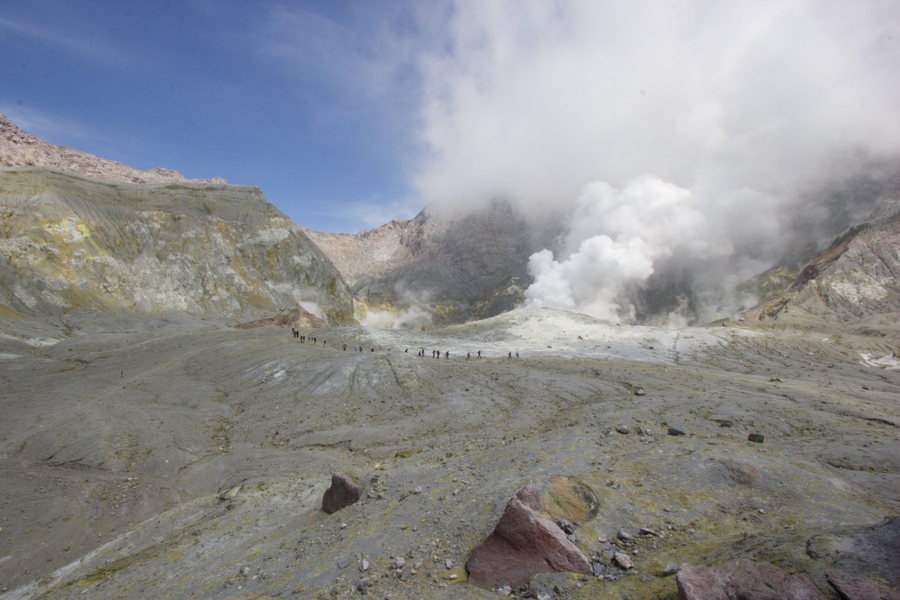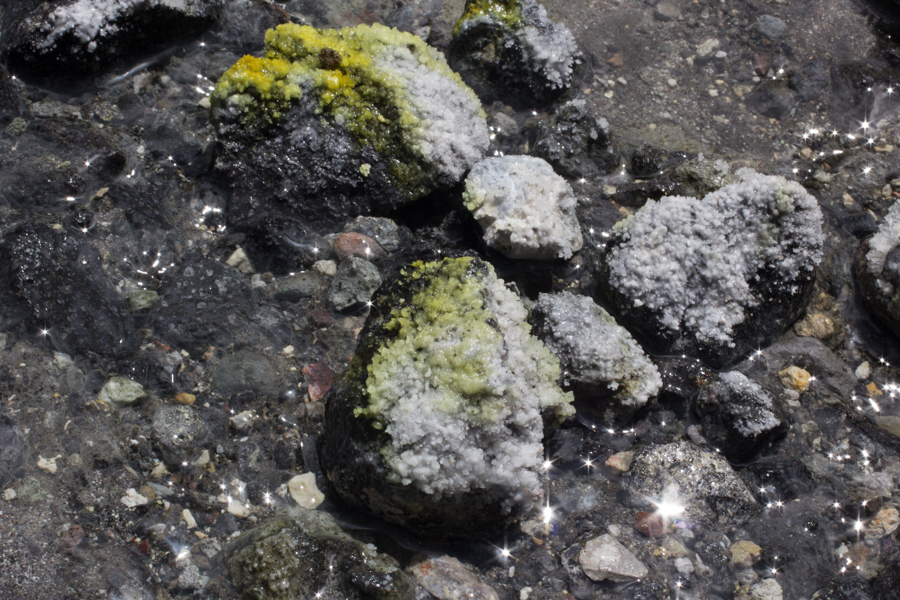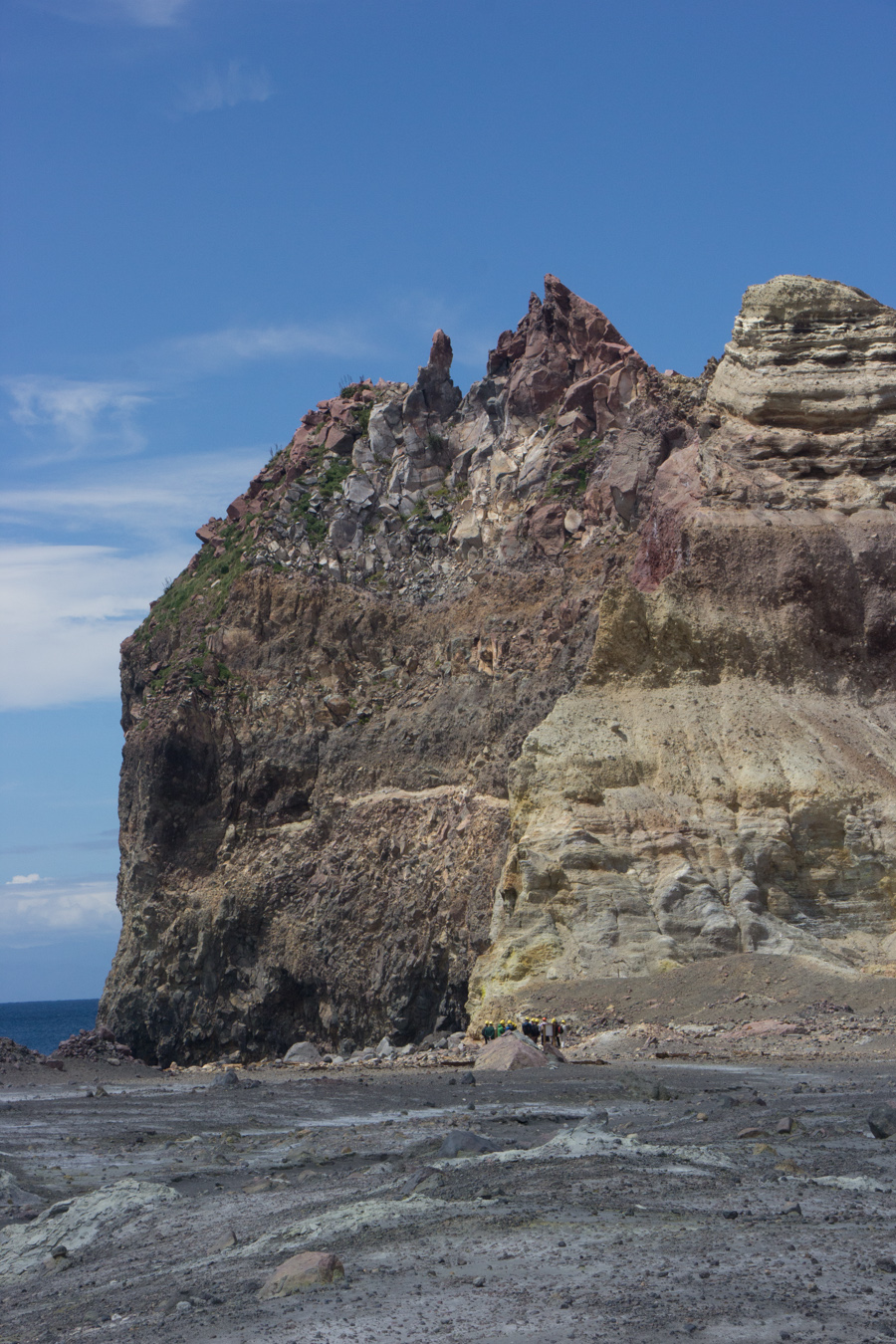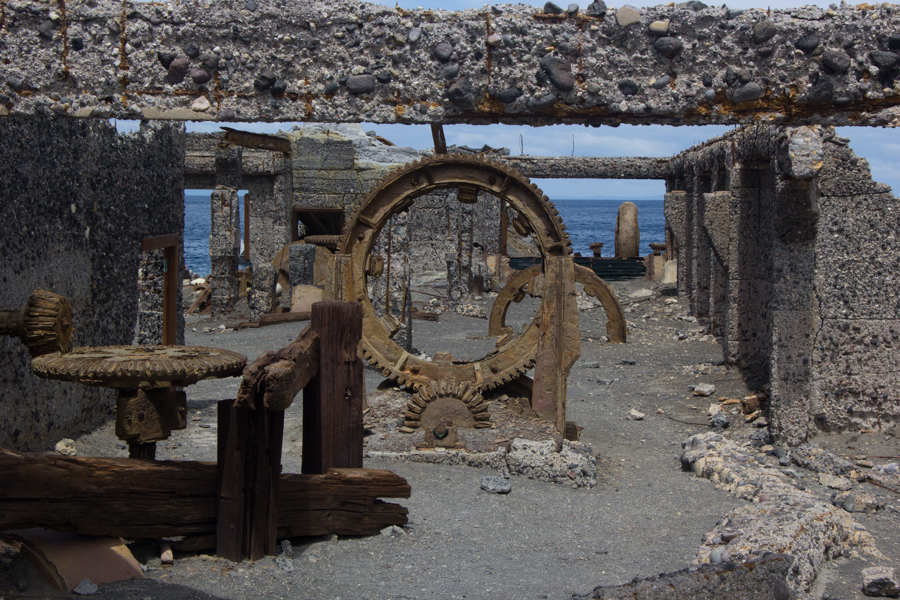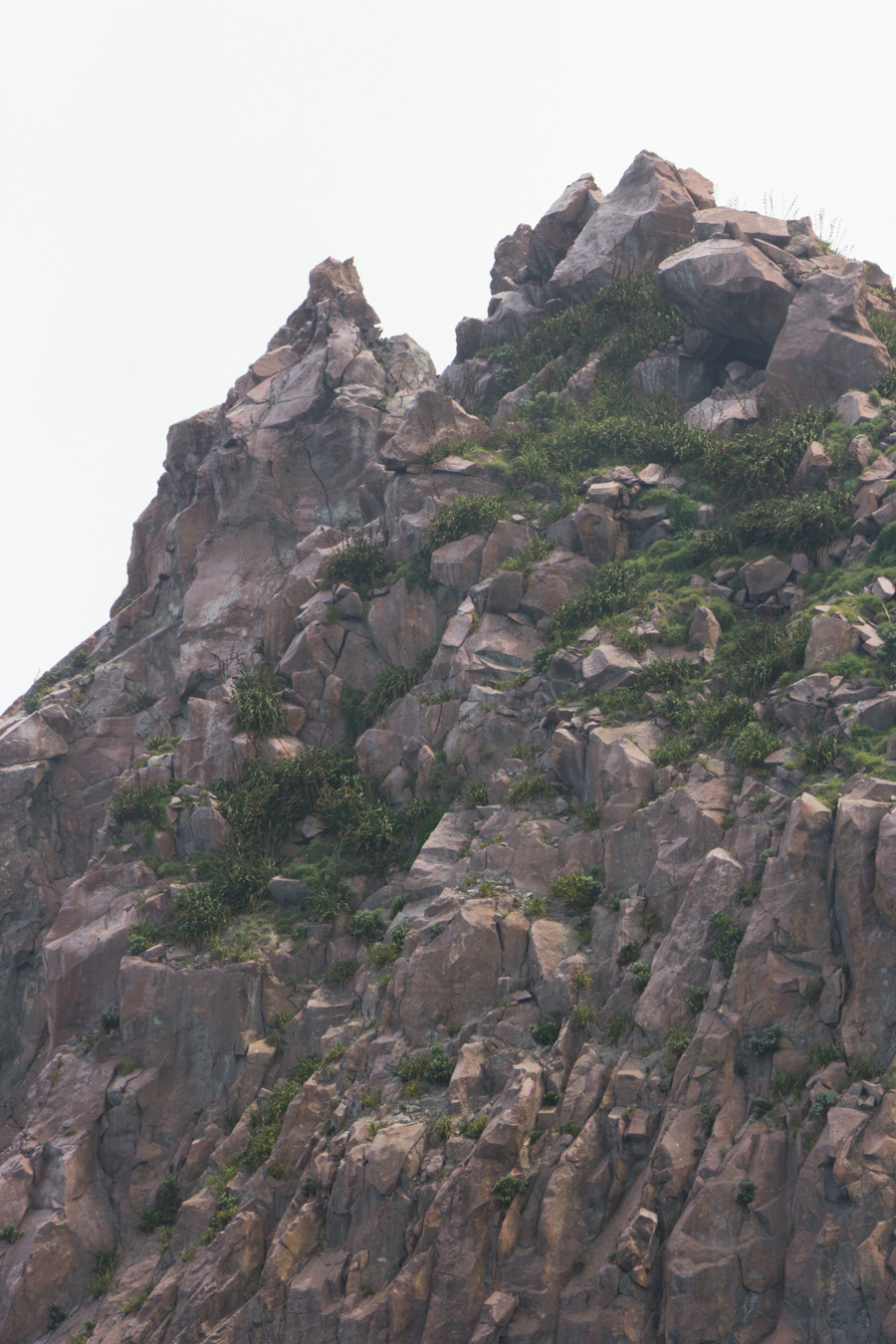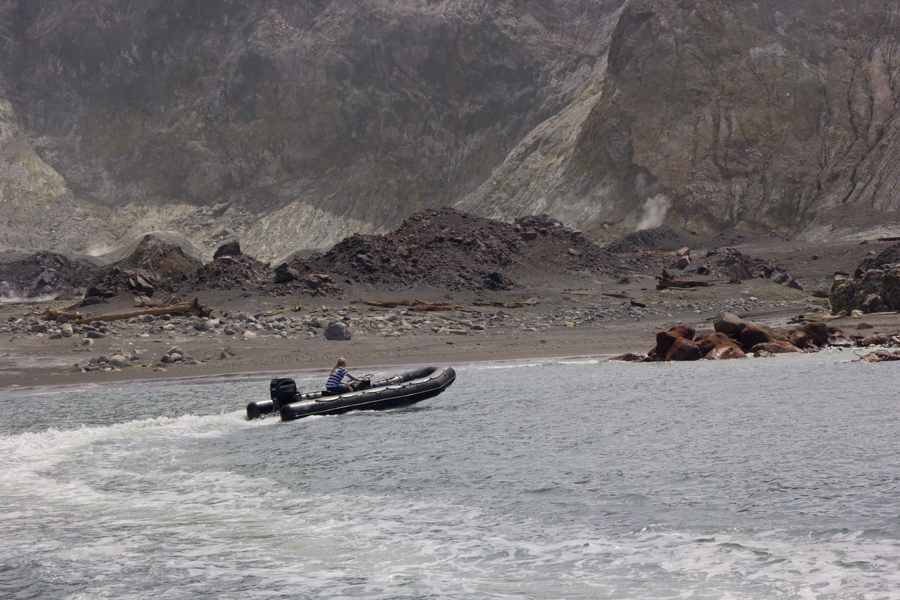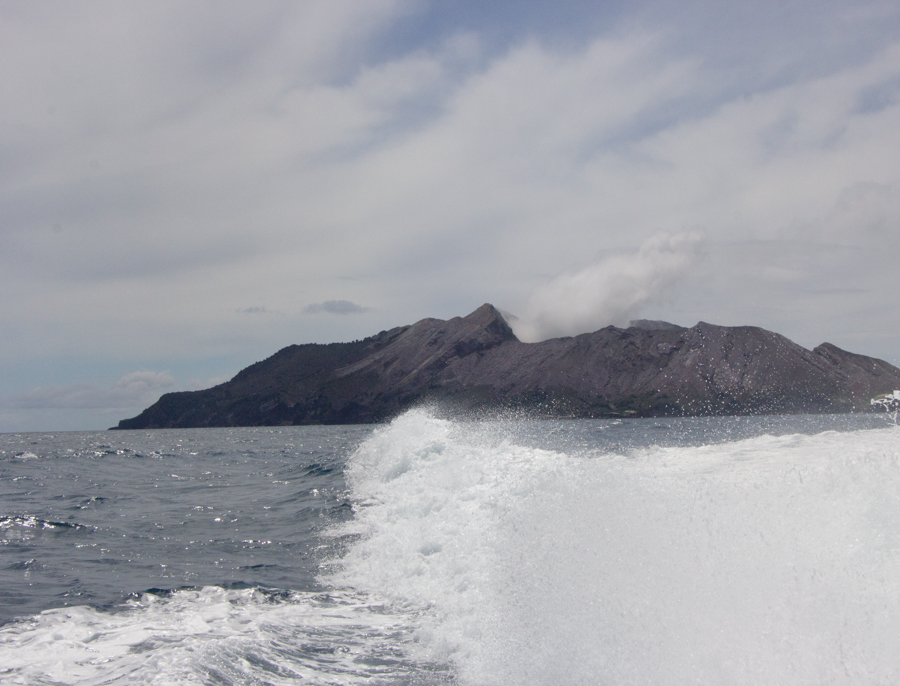Whakaari/White Island
Saturday 5 November, 2016
Fumaroles (steam vents) on Whakaari.
Since we traveled to New Zealand as part of our volcanic tour of the world, we had to do a very unusual and adventurous tour, the White Island Tour to the country's most active volcano. My father had cruised past this dramatic island on a ship and been highly impressed by it. We wanted to get up close and personal with the thing.
New Zealand's Rotorua region lies on a volcanic rift, which causes geothermal activity similar to that caused by the Yellowstone hot spot. Naturally, this area was one of our top destinations. White Island, or Whatkatane, had some minor eruptions last April, and had its last major eruption in 2000, on our ninth anniversary. How perfect is that?
We arrived in Rotorua in the evening, much later than intended after our rescheduled Hobbiton tour. As soon as we exited the car, we could smell the sulfur in the air. Wow.
Because we are such poor packers, we paid a little bit extra to have a full-sized car. As it turns out, we were better than usual at packing for this trip, and probably could have gotten away with a mid-sized car. But we are loving the thing. Just look at this V-8 monster! We are calling it "Fezzik."
Our room at the Tuscany Villas. I especially enjoyed that hot tub. I know many of you won't believe this, but I actually made it almost too hot for myself.
Whakatane is 49 km from the mainland, so we were taken there on the Predator. It was about an hour and a half trip in each direction. Captain Paul was delightful, full of geologic knowledge about the island.
A pretty sailboat in the harbor. Those of you who have known me for a very long time will know why I liked its name.
Two species of birds live on the island: Australasian Gannets and Gray-faced Petrels. I didn't get a picture of the petrels, but here are the gannets.
From the boat, we could already steam coming out of the vents on the island.
They cannot land the big boat on the island, so we had to be delivered in groups on Zodiac tenders.
We had to climb out of the Zodiac on these ladders. We were told that this was the most dangerous part of the trip.
Our group walking out into this surreal atmosphere.
Eric took a photo of this most unusual trail.
Eric's photo of the venting steam as we approached it.
The inside edge of the caldera. The western rim of the caldera collapsed in a 1914 landslide, killing ten sulfur miners.
Another group, ahead of us, deeper into the volcano. I kept looking ahead at them and thinking, "Ooh, they're going to let us go there!"
You know that the more safety equipment an activity requires, the more I enjoy it, right?
Colors of minerals, mostly sulfur, on the inside edge of the caldera.
Our guide, Fiona, passed around a sample of scoria, spit out by the volcano in the most recent eruption. Here, I hold in my hand a rock that was formed on our ninth anniversary!
The ground surrounding us was extremely odd-looking, covered in sulfur deposits.
Steam rising out of a vent.
The two of us standing in front of a fumarole. This is the way to celebrate a 25th anniversary, folks.
Fiona called this the sulfur chimney.
Here, you can see the steam coming out of the sulfur chimney.
Sulfur-covered layers in the rock.
We wandered along the trail deep into this mysterious sulfur world.
Features would pop in and out of visibility in the steam. It was like walking through a dream.
We came to a caldera within a caldera, and looked down. Sometimes, this hole is filled with a lake. Not today.
Looking deep into the lake, well, puddles.
The largest fumarole. The roaring sound was overwhelming.
Us at the overlook into the deeper caldera.
Eric took a picture of the group ahead of us on top of a dramatic overlook.
The view inside a volcanic rock.
This tour was a complete sensory experience. You got to see the stark beauty of the volcanic environment, hear the awesome power of the fumaroles, smell the sulfur hydroxide in the air, feel the heat of the steam, and even taste the "volcano juice" running off into the bay. Eric photographed the rest of us dipping our fingers into the runoff for a taste. The water tasted like blood.
A river of volcano juice.
Eric took a dramatic picture of the wild land around us.
Looking back deeper into the volcano.
Crystalline formations in the streambed.
The edge of the ridge where the 1914 collapse occurred.
Looking out through the collapsed part of the caldera into the Bay of Plenty.
Attempts to mine the island for sulfur proved so dangerous that eventually the miners gave up. Some of their equipment remains here decaying.
Few plants can survive this environment, but one that can is New Zealand iceplant. It looks very much like the iceplant that has invaded California's shores, but I do not know whether or not it is exactly the same species.
Fiona looked so tough operating the tender.
Looking back at Whakatane from the Predator. I thought of Mark, and how much he would have enjoyed hearing about our volcanic adventure.
This was one of the most incredible tours we've ever been on, and we've been on some extremely incredible tours. Being up this close and personal with the supreme power of nature was almost a religious experience. It thrilled me immensely.
On to Mitai Maori Village.
